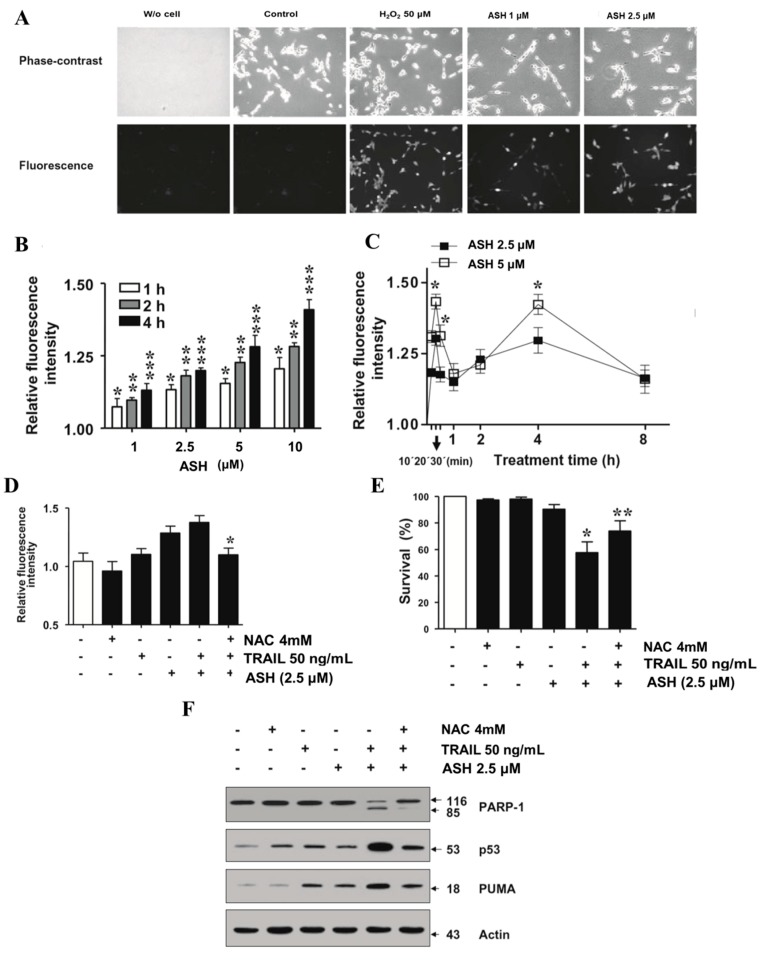Figure 4.
ASH-induced ROS production in a HepG2 cell. (A) ROS production in HepG2 cells was analyzed by fluorescence microscopy. Cells were treated with H2O2 (positive control) or ASH (1, 2.5 μM) for 60 min and labeled with CMH2DCFDA (20 μM/L) for 20 min. The positive control group or ASH (2.5, 5 μM) group showed significant higher fluorescence intensity as compared to the vehicle (PBS + 0.01% BSA) control group. (B) After exposure with ASH (2.5, 5 μM) for various times, the intracellular ROS production in HepG2 cells was analyzed by the relative fluorescence intensity. * p < 0.05; ** p < 0.01; *** p < 0.001 (C) HepG2 cells were labeled with CMH2DCFDA after treating with ASH (2.5, 5 μM) for different times. ROS productions at different time-points were quantified by the relative fluorescence intensity using the fluorescence plate reader. * p < 0.05 (D) Pretreated with N-acetyl-l-cysteine (NAC) (ROS inhibitor) significantly decreased the ROS level induced by ASH (25 μM), and (E) reversed ASH- and TRAIL-mediated HepG2 cell death. * obvious changes between ASH and TRAIL + ASH group (p < 0.05). ** Obvious changes between NAC+ TRAIL + ASH group and TRAIL + ASH group (p < 0.01). Control group received an equal amount of vehicle (PBS + 0.01% BSA + 0.1% DMSO). (F) Western blotting was applied to determine the cleavage of PARP-1 and the expression of p53, and the p53 upregulated modulator of apoptosis (PUMA) after pretreatment of NAC in combination with ASH and/or TRAIL.

